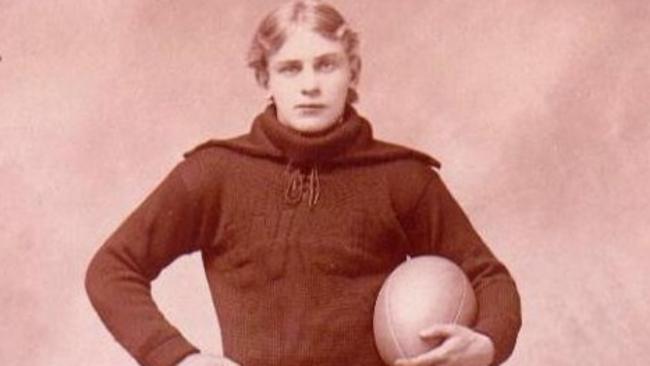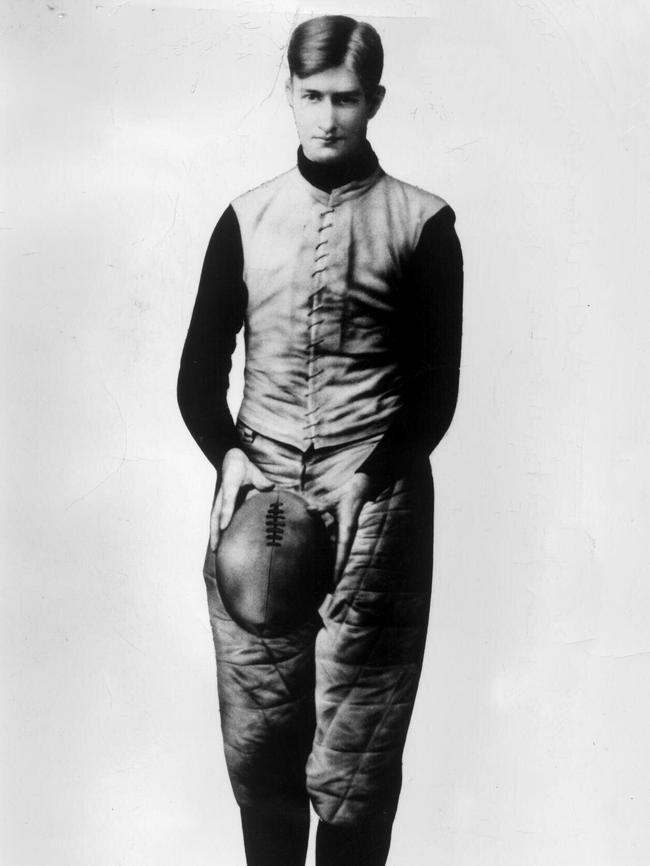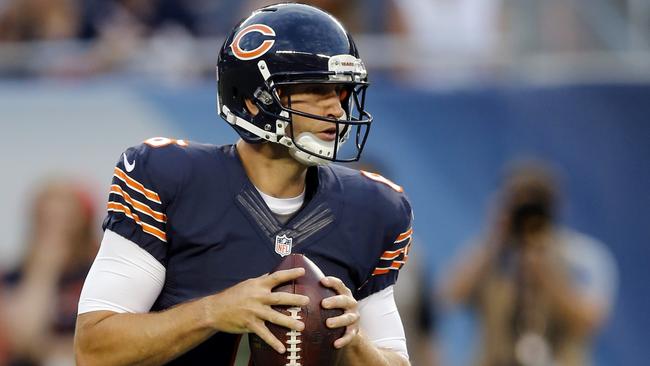Cake and watches paved road to riches for Jarryd Hayne and co
Jarryd Hayne stands to make millions from American football but there was a time when players had to hide the money they made

Today in History
Don't miss out on the headlines from Today in History. Followed categories will be added to My News.
Most Australian sportspeople can only marvel at the figures being mentioned in relation to Jarryd Hayne’s potential signing by the San Francisco 49ers. The 49ers’ star Colin Kaepernick earns $160 million (about $US112 million), which may still be below the highest paid players in the game but gives some idea of what Hayne can look forward to. That is assuming, of course, that he stays with the team and completes his contract, as players are often dropped or contracts renegotiated before the players get all the money.
Regardless, it shows how far American football has come since it evolved from the strictly amateur code of rugby in the 19th century. In fact the first open payment to a player took place 120 years ago today, although the sums involved seem laughable by today’s standards.
BENDING THE RULES
In 1895 American football was still in its infancy. Many of the rules developed by Walter Camp, the “father of American football”, had only been implemented in the previous decade. Many teams had been formed within universities, but others were among athletics clubs, so there were strict rules and traditions against earning money for playing. Many players were track and field athletes who played to keep fit during the winter. If they were caught accepting money to play any sport they could be disqualified from athletic competition.

However, as football became more popular there were greater demands on players, in terms of tours, equipment, training and injuries. Because sport didn’t pay the bills players were loath to take time off work to compete. Clubs began compensating players through “expenses payments”.
While technically still against the rules, a certain amount of compensation came to be tolerated, but clubs began to use tactics to give players double the compensation payment, such as giving a trophy or gift of a watch, which could be pawned by the player. The Amateur Athletic Union kept trying to find ways to ban these payments but teams kept finding new ways to get around the rules.
THE $500 TOUCHDOWN
In 1892, when Allegheny Athletic Association (AAA) played the Pittsburgh Athletic Club (PAC), the AAA were accused of making payments to their players. The PAC had no way of substantiating their claim but claimed William “Pudge” Heffelfinger had been paid to play. It remained a secret at the time but researchers would later unearth a $500 bill for expenses paid to Heffelfinger, who scored the touchdown that earned AAA its 4-0 victory.
The secret payments continued until one player openly admitted being paid. That player was John Brallier. A talented 17-year-old, Brallier was asked by the Latrobe team in Pennsylvania to replace a quarterback who had dropped out realising that he had a scheduled baseball game. Brallier was reluctant to play fearing an injury might prevent him taking up a scholarship at college in a few weeks’ time. Latrobe gave him an incentive of $US10, plus expenses and some cakes. Brallier accepted and on September 3, 1895, Latrobe won 12-0 thanks primarily to his efforts in what is now seen as the first openly professional game.
150 REASONS TO SIGN
Brallier admitted being paid and soon payments to players would become the accepted norm. While still studying Brallier became a professional footballer, in 1898 signing a contract with Latrobe for $150. For many years until Heffelfinger’s story emerged, he was considered the first professional.
Around that time the first Australian-born American footballer was making an impact. Pat O’Dea came from Kilmore in Victoria and was dubbed the “Kangaroo kicker” for his phenomenal ability to boot the ball, honed playing Australian football. In 1900, to keep him in the game, Notre Dame University paid him $US500 to be their coach, but he also continued playing. In 1901, while still on the payroll as Notre Dame’s coach, he left the team to play with a professional side against Notre Dame.
In 1902, the first fully professional football league was formed. Thereafter payments to players continued to rise as teams competed to recruit the best.
By 1980 players were negotiating in the millions of dollars. The first to crack the million mark was Olympic gold medal runner Johnny “Lam” Jones, who signed a contract with the New York Jets for $US2.1 million.

LEADERS OF THE PACK
Calvin Johnson Detriot Lions, signed an eight-year contract for $188 million ($US132 million) in 2012
Michael Vick Atlanta Falcons, signed a 10-year contract for $185 million ($US130 million) in 2005
Jay Cutler Chicago Bears, signed a seven-year contract for $179 million ($US126 million) in 2014
Colin Kaepernick San Francisco 49ers signed a six-year contract for $160 million (about $US112 million) in 2015
Originally published as Cake and watches paved road to riches for Jarryd Hayne and co



